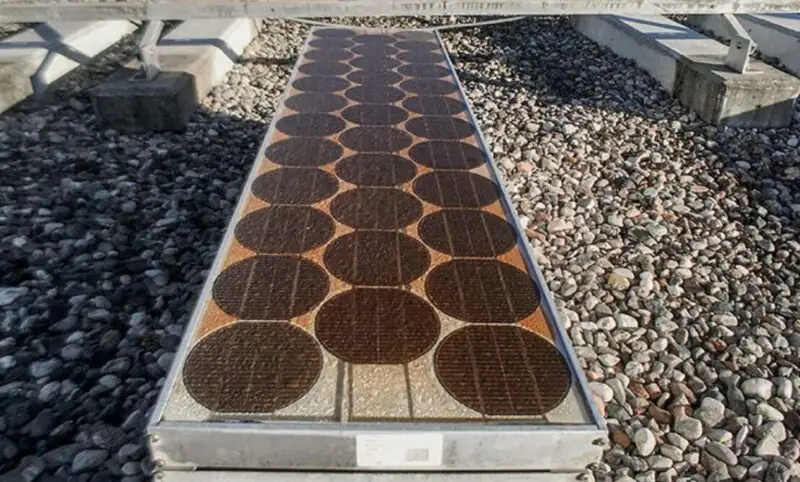A photovoltaic system, also PV system or solar power system, is an electric power system designed to supply usable solar power by means of photovoltaics. It consists of an arrangement of several components, including solar panels to absorb and convert sunlight into electricity, a solar inverter to convert the output from direct to alternating current, as well as mounting, cabling, and other electrical accessories to set up a working system. It may also use a solar tracking system to improve the system’s overall performance and include an integrated battery.
PV systems convert light directly into electricity, and are not to be confused with other solar technologies, such as concentrated solar power or solar thermal, used for heating and cooling. A solar array only encompasses the ensemble of solar panels, the visible part of the PV system, and does not include all the other hardware, often summarized as balance of system (BOS). PV systems range from small, rooftop-mounted or building-integrated systems with capacities from a few to several tens of kilowatts, to large utility-scale power stations of hundreds of megawatts. Nowadays, most PV systems are grid-connected, while off-grid or stand-alone systems account for a small portion of the market.
The first photovoltaic system in Europe to be connected to the public power grid is in the Swiss canton of Ticino. After 40 years, the 10 kW system from 300 PV modules on an area of almost 500 square meters is still supplying solar power.
Switzerland is not exactly the sunniest place in Europe. But Ticino does. It is therefore not surprising that the first photovoltaic system in Europe was connected to the public power grid there. That was in 1982. And the oldest grid-connected photovoltaic system with almost 300 PV modules and an area of almost 500 square meters is still running today – almost as well as it was back then. Then as now, with space technology. That means with photovoltaic panels, which are also used in satellites .
The photovoltaic system called Ticino Solare 10 (TISO10) was installed on the roof of a building at the Scuola Universitaria professionale della Svizzera italiana (SUPSI) near Lugano. On May 13, 1982, the south-facing facility began supplying power to the grid. The installed power was 10 kW. Hence the 10 in the name. Today, significantly more than 100 kW are built on a 500 square meter solar surface. 10 kW was unusually high for those times.
Today the photovoltaic panels are on another building. Researchers regularly checked and measured the condition, condition, color and performance of the solar cells . An examination after 35 years of operation came to the conclusion that the cells are showing signs of wear. These include corroded areas, burned areas (hot spots), cracks in the cells or defective connection cables. However, the majority of photovoltaic modules still functioned well. And all in all, the oldest grid-connected photovoltaic system in Europe still delivered at least 80 percent of the output.

